A Storage Device Consists of a Read/write Mechanism and a Storage Medium
Definition of computer storage devices
A storage device is whatsoever type of computer hardware used to store, port or excerpt data files and objects. Storage devices can agree and shop information both temporarily and permanently. A Storage device for a figurer allows its user to store and securely admission data and applications on a calculator device. These computer storage devices act as an integral role of the system. A hardware device which tin be used to shop digital data and application which may exist in the form of image, video, sound etc. is chosen storage device. They may be internal or external to a computer, server or calculating device.
Usage of storage devices
Why we use the storage devices
I of the purposes of storage devices is to dorsum upward your of import information. In the business organisation globe, there is a need to secure and store data in a mode that is not hands destroyed, corrupted or damaged. Unlike storage media can be used for backup or storage.
Storage devices provide many uses to uses as it provides great flexibility to the uses.
Information technology helps to check all records and also continue track of the number of uses who take access to the data.
Storage devices as well helps to protect the confidential information which is very important to the user.
With the use of information storage and other storage, It is easy to catechize and audit records.
IN business side, storage devices can help to provide evidence of a concept to other business concern partner and it is able to analyze the market place situation and help the business to win the competition.
Advantages of using storage devices
Storage devices helps to increment efficiency and operation and it helps to reduce the weight of the man brain in remembering things.
It is easy to analyze and compare past reports and transaction and based on those reports we can also predict hereafter situations.
Its also helps to reduce the overall price of dealing or activities in everyday life.
It gives the user great flexibility and mobility and can easily move the information stored in the repository from one place to another.
Analyzing and storing the reason for doing a job or task can improve management decisions several times over.
Blazon of the storage
§ Primary Storage
§ Secondary Storage
§ Tertiary Storage
§ Offline Storage
Chief storage
The master storage of a figurer is its master retentiveness. Information technology is the built-in memory designed to store information and instruction. Primary storage is component of the computer that holds data, programs and educational activity that are currently is utilize. This memory is hands and directly accessible by CPU. It is located on the motherboard. As a outcome, data tin can be read from and written to chief storage extremely quickly. This gives the processor fast admission to the data and instructions that the chief storage holds. The main retention is classified 3 types which are:
ü RAM (Random Access Retentivity)
ü ROM (Read only Memory)
ü Cache Memory
RAM (Random Access Memory)
RAM is used to read and write data. RAM tin be constantly overwritten with new data. It is referred to every bit volatile retentiveness, meaning is it holds data only when the power is on, when the ability is off, RAM'due south contents are lost.
Data tin can exist extracted from RAM faster than an external hard drive, and the CPU typically takes ten nanoseconds to read from RAM. Most computers limit the size to i GB. Each location in RAM is uniquely identified by an address, so the instruction or data stored in it are directed to the processor, and these addresses are stored in CPU registers during operations.

ROM (Read Only Retentiveness)
ROM is used only to read the data from the memory. The contents read the data from retentivity. The contents in the ROM are permanent. They are not lost when the figurer is switched off.
ROM stores the important programs that are necessary to start the computer. It also consists of programs that check the proper working of all the computer parts, when a reckoner is turned on. The RM is referred to as the non-volatile memory.
Cache Retentiveness
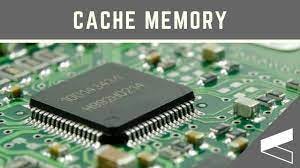
Frequently addressed instructions and information are stored in a special fast retentiveness in the CPU due to wasted try and the time it takes to call back it from the dull main memory. Such storage is called catch memory and ranges in size from 2KB to 64KB. The size of this retention is much smaller than the main memory and the toll is higher than the master memory but lower than the resistors. (GEEKSFORGEEKS, n.d.)
Secondary memory
The secondary storage is used to shop a large corporeality of information permanently in a computer'due south memory. It is not straight accessible to the CPU. These devices store most all types of programs and applications. This can include items such equally operating system, device drives, applications and user data.
Secondary storage is non-volatile, long- term storage. It is used to keep programs and data indefinitely. Without secondary storage all programs and data would be lost the moment the computer is switched off.
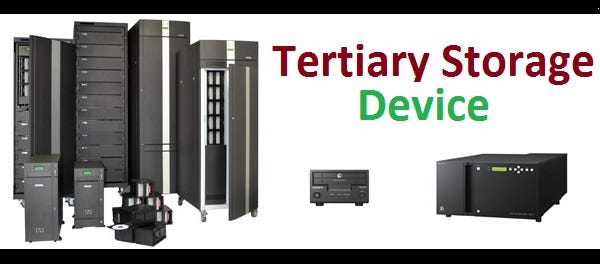
3rd Storage
Third retention is lower than Secondary storage. It is usually involves robotic machinery that fastened a removable mass storage medium to a storage device as required by arrangement; Such data is copied to secondary storage before use. This is primarily useful for unusually large databases that can exist accessed without human operators. Typical examples include tape libraries and visual jukeboxes. Tertiary storage primarily used to shop information that is rarely accessible because it is slower than secondary storage (e.g. 5–60 second vs. 1–10 seconds).
When a Computer needs to read information from a tertiary storage, information technology volition first ask the directory database to determine which tape or deejay contains that information. The computer will then instruct the robot to take the media and identify it in a drive. Once the computer has finished reading the data, the robot will transfer the media into the library.
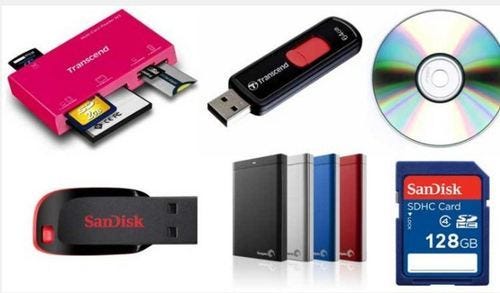
Offline Storage
Offline storage means, any storage medium that a user must physically add together to a system whenever they need to retrieve or edit data. This storage can be type of internal or external storage that tin can be easily removed from a computer. Offline storage is also known as removable storage.
Offline storage is any repository that is currently online, live or offline. Data stored in offline storage remains permanently on the storage devices even if it is disconnected or disconnected from the computer. Offline storage is mostly portable and can exist used on a variety of computer system. Common examples of offline storage are floppy disks, CDs, USB sticks and SD cards. Offline storage tin besides be used to create backups. Many organizations will support some of the older technologies, such as digital information storage. Digital data storage uses digital magnetic stripe technology and can exist used equally an cheap information backup method that can exist used offline until the tape is inserted to remember data.
Blazon of computer storage devices

Magnetic storage devices
Magnetic storage devices shop all data using magnetic media, and the types of data stored in binary modes 0 and i. Magnetic storage is from of non-volatile storage. It means that the data is not lost when the information is not when the storage devices is not powered. Today near people prefer magnetic media because they tin read/write on magnetic storage devices which makes it possible to re-use the storage capacity over and over once again by deleting older data. This storage devices accept a large storage chapters and very attractive feature. This storage devices are less expensive and data access is slow, this magnetic mechanism tin can also be used for RAM and provides ameliorate information admission than others. Several types of magnetized media are used reckoner system, including Hard Drive, Floppy Deejay, Magnetic Tape and Magnetic Drum.
Difficult Bulldoze
Hard disk drive, also known as hard disk or hard drive is a magnetic storage medium for a computer. Hard disks are flat round plates made of aluminum or glass and coated with magnetic material. Hard disks for personal computers tin can store terabytes of information.
Floppy Disk
Floppy disks, sometimes called flexible disks, can shop hundreds of thousands, millions and millions of pieces of information. It takes a tenth of a second for a floppy deejay drive to received whatever piece of information direct.
Magnetic tape
A magnetically coated strip of plastic on which data tin exist encoded.
A device that stores estimator data on magnetic strips is called a tape bulldoze. Magnetic recording revolutionized sound recording and reproduction and transmission.
Optical storage devices
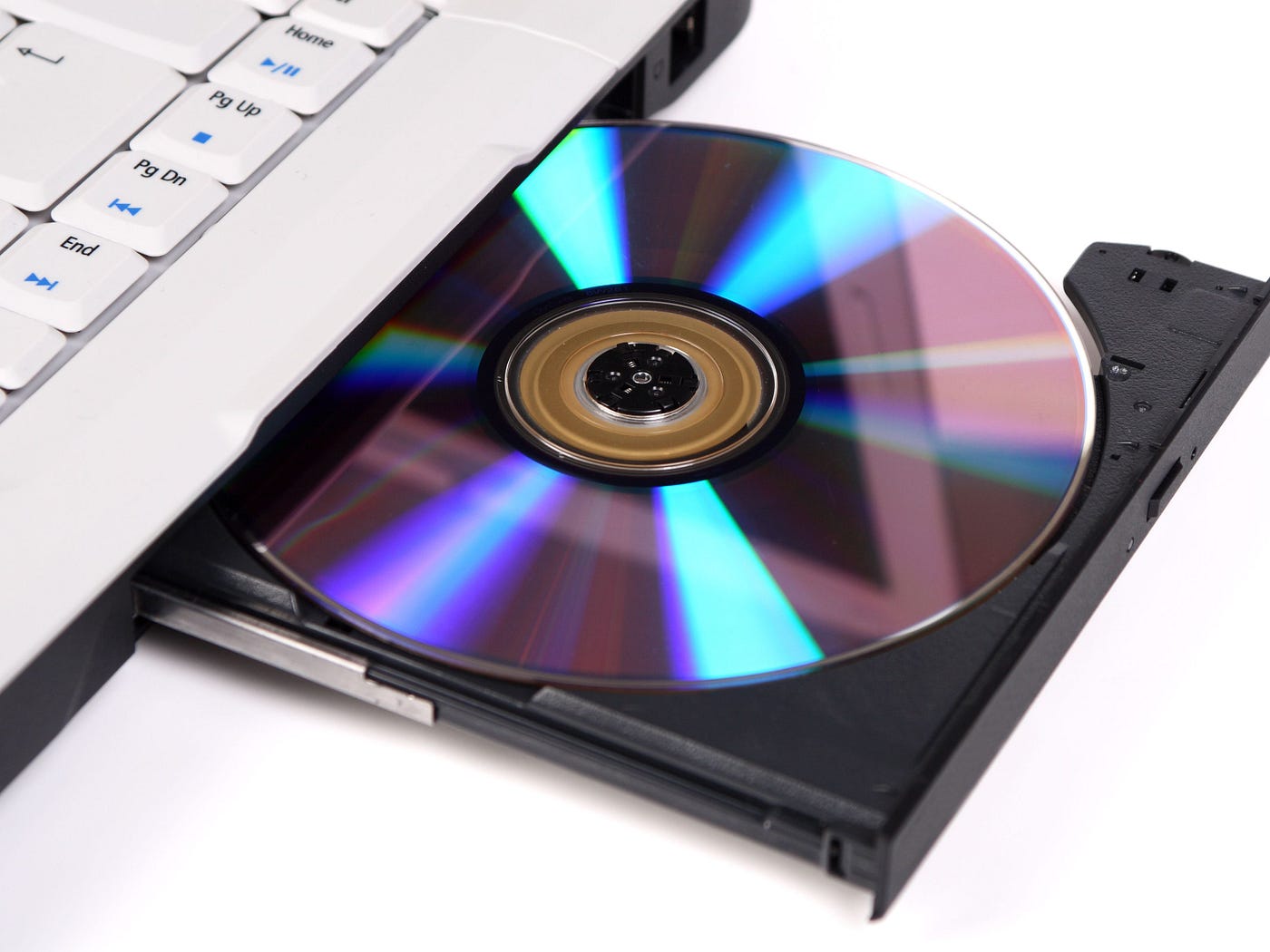
Optical storage besides known as "optical media" or "optical memory" or "optical media", allows all reading and writing to exist done by light amplification by stimulated emission of radiation beams. Optical disc is whatsoever storage media that holds content in digital format and is read using a laser assembly is considered optical media also as optical storage devices all data is left every bit piece of cake-to-read dotted patterns using lite. The laser beam is used as the "calorie-free source".
All recording information is stored on an optical disk in the optical retentiveness. In the opinion of the data scientist, compact infinite is more useful for storing large data. Unlike a removable hard drive, its main advantages are high price, low weight and ease of transport. It has ultra information stability and countable or uncountable storage unit of measurement. Instance for storage devices,
CD-ROM, DVD-ROM, Blueish Ray, HD DVD, DVD-RAM
Wink memory devices

It is used information-storage medium used with computers and other electronic devices. Wink memory known as wink storage, is a type of non-volatile memory that erase data in units chosen blocks and rewrites data at the byte level. Information technology is widely used for storage and data transfer in consumer devices and industrial applications. Flash memory retains data for a long fourth dimension regardless of whether a flash-enabled device is activated or not.
The two main types of flash memory, NOR Flash and NAND Flash, are named for NOR and NAND logic ports. The floating gates uses a single jail cell design or flash consisting of MOSFETs. At the circuit level they vary depending whether the position of the bit line or word line is down upwardly or downward.
Portable devices such as digital cameras, smartphones and MP3 players typically apply flash retentivity. Uses flash memory to shop USB drives (also known as thumb drives and flash drives) and memory card data. In the early 21st century equally it became cheaper, flash retentivity in laptops began to appear as difficult disks.
Online deject storage device
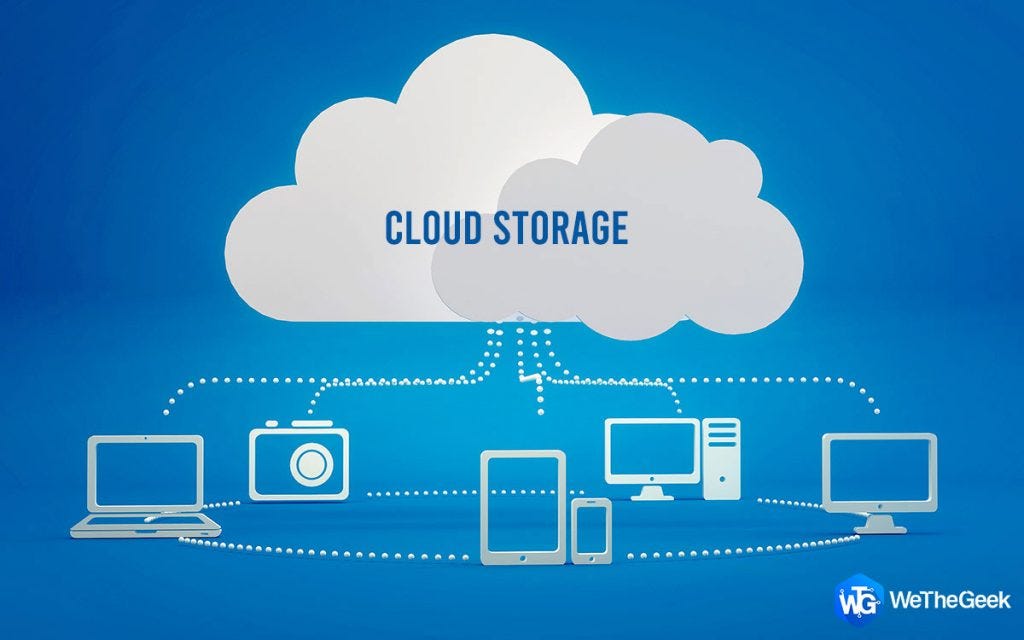
Cloud storage is the storage of information at a remote location that can be accessed from any device. Cloud storage increases efficiency and productivity for backing up and securing data. Cloud storage is a from of cloud computing that stores data over the net through a cloud computing provider that manages and activates information storage every bit a service. This gives fast, global calibration and durability with data access "someday, anywhere".it delivers on need with capacity and price on fourth dimension and eliminates the need to purchase and manage your ain data storage infrastructure.
Cloud storage is virtual storage service which is very different from the other storage device attached to the calculator. Its also referred to equally online storage. Data like photos, videos, music, files etc. can be stored online and shared hands with friends. The internet stands every bit the footing for the cloud storage concept.
Nearly used storage devices
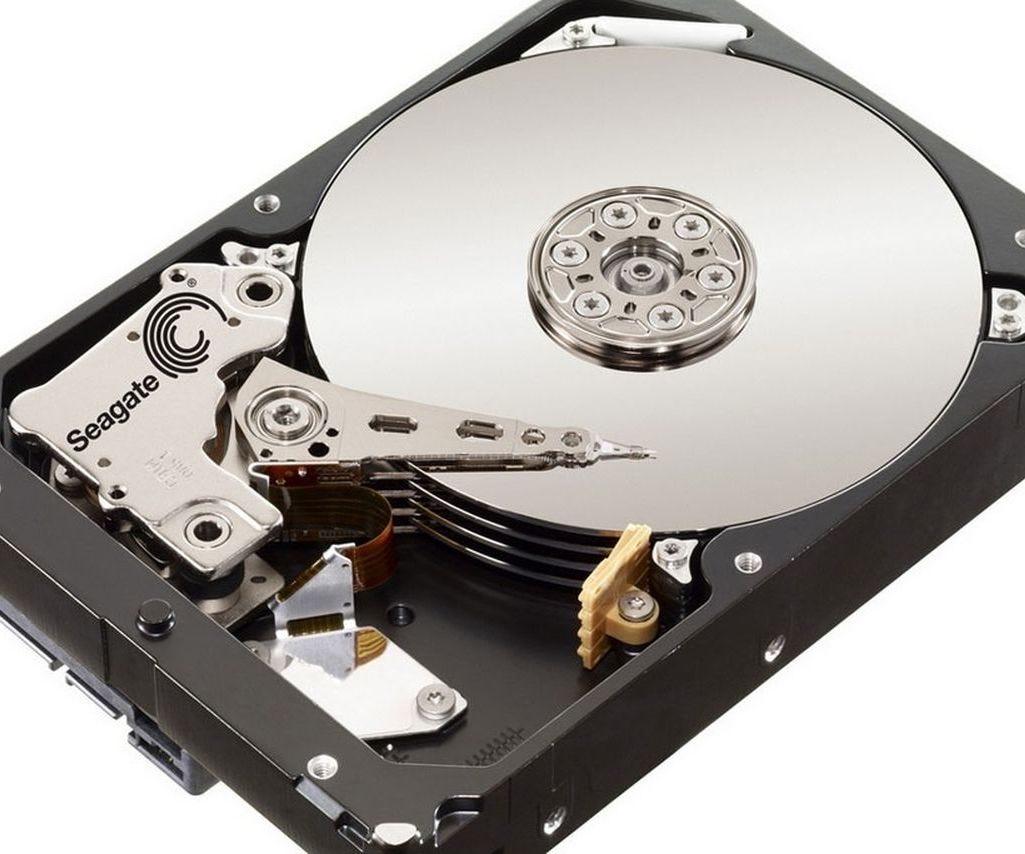
Hd
Difficult disk, also chosen difficult disk drive or difficult drive. The hard disk is the master and usually largest data storage devices in a computer. Hard disk is a not-volatile information storage device. It is usually installed internally in a calculator, attached straight to the disk controller of the estimator'south motherboard. It can store from 160 gigabytes to 2 terabytes. Deejay access time is measured in milliseconds. Hard disk speed is the speed at which content can be read and written on a hard disk. A hard disk unit comes with a prepare rotation speed varying from 4500 to 7200 rpm.
Difficult disks are flat circular plates made of aluminum or glass and coated with a magnetic fabric. Data are stored on their surface in concentric tracks. A small electric gun also known a magnetic head, write binary digit (1or 0) by magnetizing tiny spots on the spinning disk in different directions and reads digit past detecting the magnetization direction of the spots. Hard drive besides consisting of several hard disks, read/write heads, drive motor to spin the disks and small corporeality of circuitry. Hard disk is likewise used to refer to the whole of a figurer'southward internal data storage.
Before a magnetic disk can exist used, it must be formatted- a process that maps the disk's surface and determines how data will be stored. During formatting, the creates circular tracks effectually the disk's surface, then divides each runway into sectors
USB Flash drive
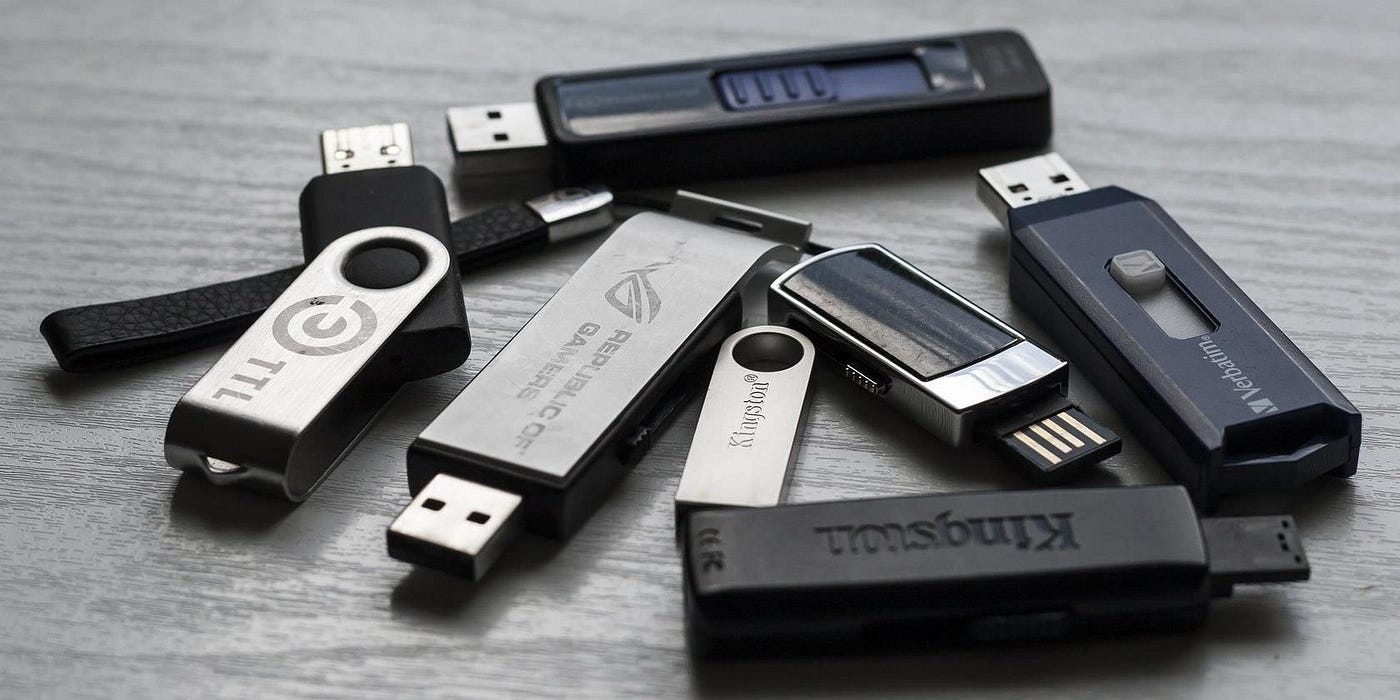
A USB wink drive may also be known every bit a flash drive or USB bulldoze. USB flash drive is used to store data, including wink memory and an USB interface (integrated Universal Serial Bus). Nearly t USB wink drives are removable and rewritable. Physically they are small, durable and reliable. USB flash drive have more than storage infinite, the fast they tend to run. It is mechanically very potent as there are no moving parts. They receive activation power from a device connected via a USB connector (commonly a computer).
USB drive are supported by all operating system and BIOS. It tin store and transfer much data faster than optical disk drives and floppy disks and information technology is equipped with a USB connector and is securely and electrically insulated in a plastic or rubber cover. Inside the comprehend of the device is a small printed board with integrated circuits mounted on the surface. (COMPUTERHOPE, due north.d.)
The main features of a USB flash drive are:
ü Standard USB plug. This connects the flash drive to a device.
ü USB mass storage controller. This is a microcontroller for USB. It has a small-scale corporeality of RAM and ROM.
ü NAND wink retention bit, data is stored in this component crystal oscillation. Data output is controlled by this feature.
CD, DVD AND Blue Ray Disk
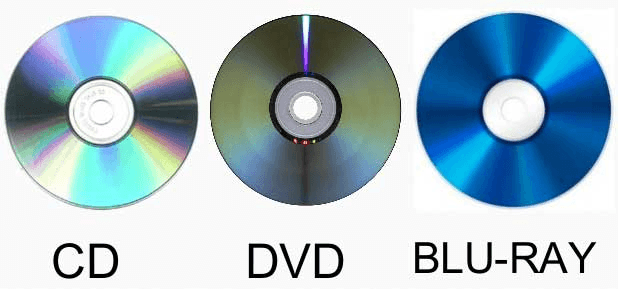
If someone is a lover of music, movie or videos you probably have a collection of CD's, DVD's and Blu-ray discs in your house. Although CD, DVD and Blue-Ray are all used to store sensitive data and other entertainment stuffs like music, they all come with different features. Generally, people use CDs to store music, DVD to store standard definition movies, and Blue-ray to shop loftier definition videos.
CD
This is a storage medium normally used to shop video, sound, peculiarly music and information digitally. The CD can also be used to tape CDs. A standard compact disc comes with a capacity of about 650–700 MB of Data, or 80 minutes of playback sound. They are many improve formats on the market today. With the introduction of computers and their increasing use worldwide, CD formats were adopted for storing data.
DVD
DVDs take larger storage space than CDs and can too be used to store video and digital data. We do not have to how to play the DVD because present computers come with DVD-ROM and we can even use a DVD player for information technology. DVD allowed people to store what they could not manage on a CD.it has more than storage capacity (4.7 GB). DVD is commonly used by the amusement industry to shop high quality videos. it can also exist used to store sensitive information, software and and then on.
Blueish- ray disk
Blu ray disk replaced both CD and DVD with more 25 GB of storage, allowing for loftier quality audio and video storage. The name of this model comes from the colors laser, which are required for burning data disks as they comes in violet and blue colors. These discs are more expensive than CD and DVD due to their storage quality and their aspects.
Floppy Disks
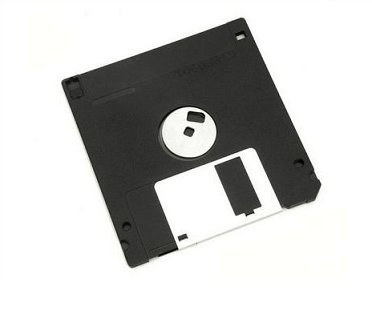
Floppy disk too called Flexible disks are storage media capable of holding electronic information, such as computer files. Equally an culling to ownership hard disks, FBA created floppy disks in 1967, which were very expensive at that time. Floppy disk is a magnetic storage medium for figurer system. The floppy disk consists of a flexible magnetic deejay sealed in a rectangular plastic carrier. A estimator system must have a floppy disk drive to read and write data from a floppy deejay.
A number of dissimilar types of floppy disks have been developed. The size of floppy disk was smaller and the storage chapters was larger. In the 1990s other media, including hard drives, nil drives, hard disks and USB flash drives, began to be replaced every bit floppy deejay primary storage.
Original computer did not have CD-ROM drives or USB; The only way to install a new program on calculator or to dorsum up information is to have floppy disk. floppy disk was also a mutual place for users to store and fill-in their files. Example, a word processing file can exist copied to a floppy disk, opened on another computer or stored as a backup.
Characteristic of calculator storage devices
Once we know that there are different types of storage devices, nosotros also need to exist aware of the different characteristics of storage types to permit us to identify the most suitable storage foe particular situation.
1. volatility
Non-volatile memory
Retains stored information even when power is non constantly supplied. It is ideal for long term information storage. Currently used for many secondary, tertiary and offline storage.
Volatile memory
Abiding power is required to maintain stored information. Volatile ones are the fastest memory technology bachelor today. Since primary storage needs to exist very fast, it mainly uses volatile memory.
ii. Speed
When a discussing the speed of a storage device, we are referring to how fast computer can read and write data to a device. This often depends whether the device has moving parts.
Whole figurer backup
If the fill-in is existence taken out of the website, the device needs a portable characteristic.
Moving Homework file to school
Device speed is not e'er relevant because files are small.
3.Portable
Information technology is often an important factor to be able to carry storage devices every bit we apply many portable devices with u.s.. Characteristic of a portable device lightweight and compact-Think of a smartphone with a full-size hard bulldoze
iv. Price
Storage costs tin be viewed in several ways. We can mensurate the cost per MB or the price of the device as a whole. Sometimes the cost of an MB may be higher but the capacity requirements are smaller and the toll of one device is more than of import — eg, CDs and DVDs
five. Mutability
Read/write storage or, mutable storage
Read/write storage or distorted storage allows yous to rewrite information at whatever fourth dimension. A computer that does not take the space to read/write a certain amount of principal storage will be useless for many purposes. Modern computers generally use read/write storage for secondary storage.
Read only storage
Retains information stored during production and writes once written (write multiple times) allows you to write information only once at a time after production. These are called non-changing stores. Unchangeable stores are used for tertiary and offline storage. Example CD-ROM and CD-R.
Slow write, fast read storage
Read/write information storage, which allows information to be rewritten several times, but with the writing procedure much slower than the reading process. Example include CD-RW and wink memory.
References.
Britannica. (n.d.). Retrieved from https://www.britannica.com/technology/wink-memory
BRITANNICA. (northward.d.). Retrieved from https://www.britannica.com/technology/optical-storage
ComputerHope. (n.d.). Retrieved from https://www.computerhope.com/jargon/f/floppydi.htm
COMPUTERHOPE. (northward.d.). Retrieved from https://www.computerhope.com/jargon/j/jumpdriv.htm
GEEKSFORGEEKS. (n.d.). Retrieved from https://www.geeksforgeeks.org/master-memory/
Guptha, P. (n.d.). EDUCB. Retrieved from https://www.educba.com/what-is-storage/
TeachAuAboutIt. (northward.d.). Retrieved from https://teachallaboutit.school/characteristics-of-storage-types/
techopedia. (north.d.). Retrieved from https://world wide web.techopedia.com/definition/1102/offline-storage
thanoja, M. (north.d.). DESKDECODE. Retrieved from https://www.deskdecode.com/cd-dvd-blu-ray/
WIKIPEDIA. (i October 2021, at 12:31 (UTC).). Retrieved from https://en.wikipedia.org/wiki/Computer_data_storage
Source: https://medium.com/@gimhanishashikala076/definition-of-computer-storage-devices-788fdfddd7d0
0 Response to "A Storage Device Consists of a Read/write Mechanism and a Storage Medium"
Post a Comment